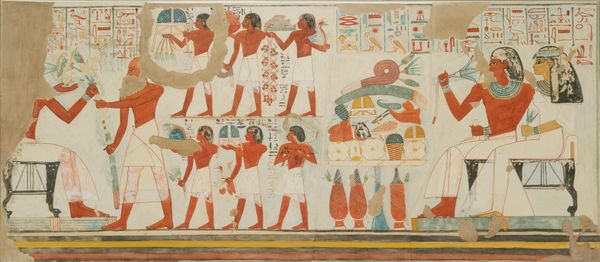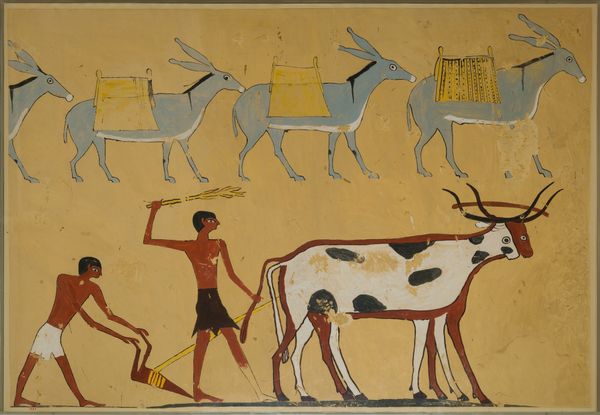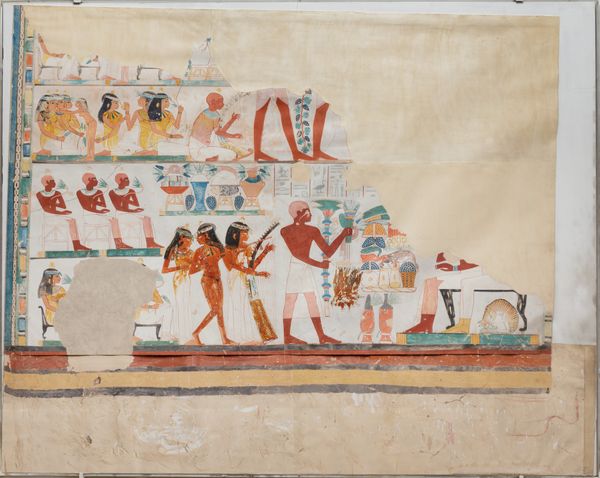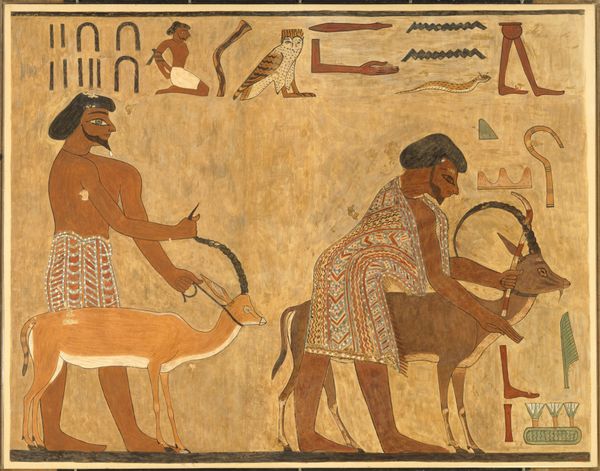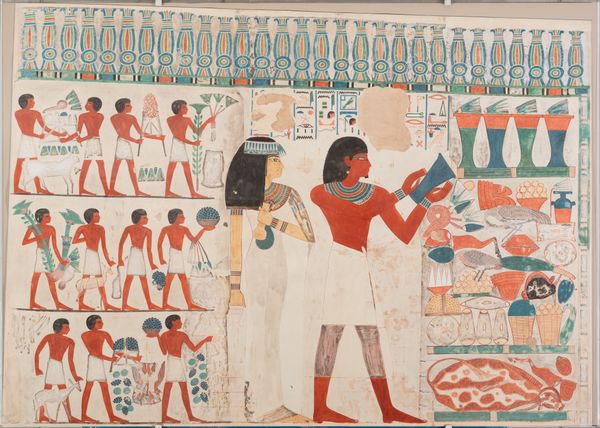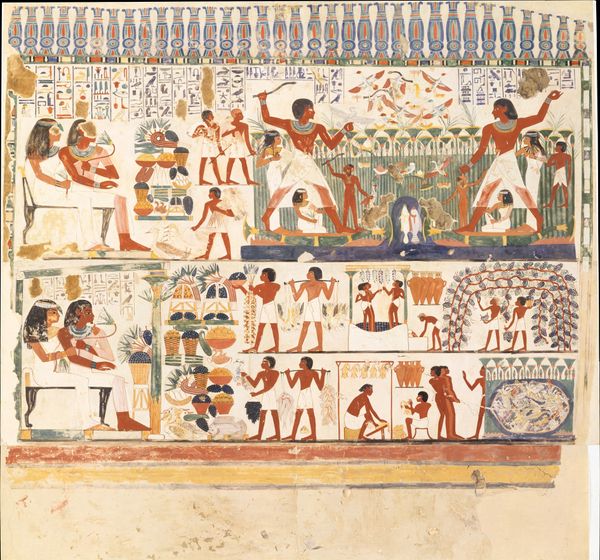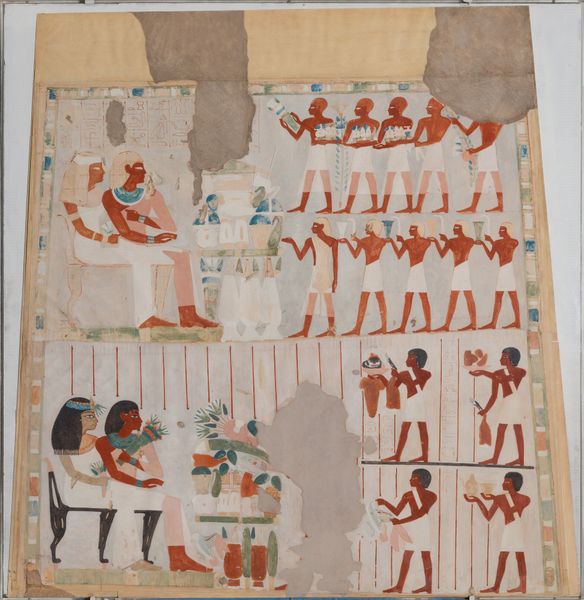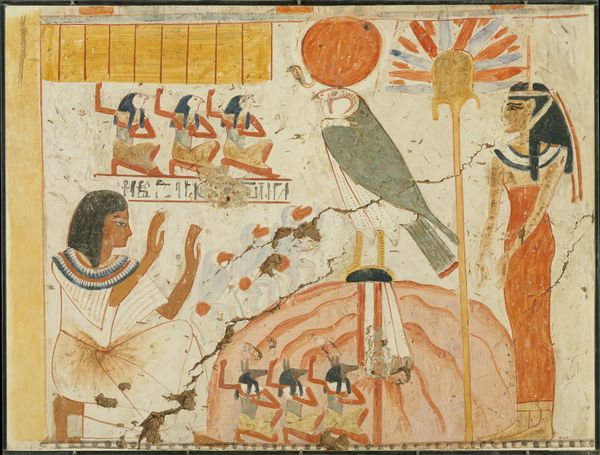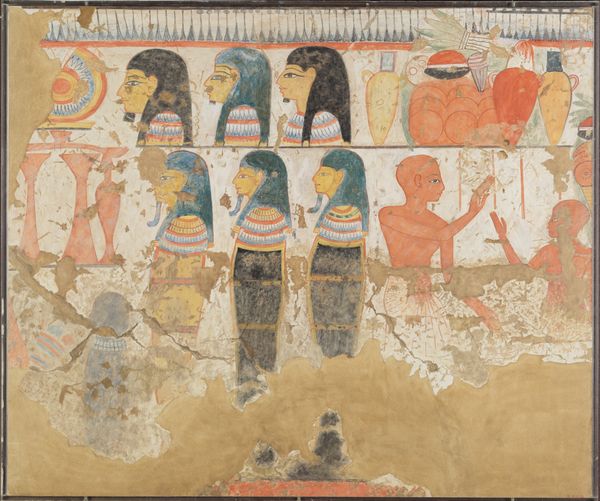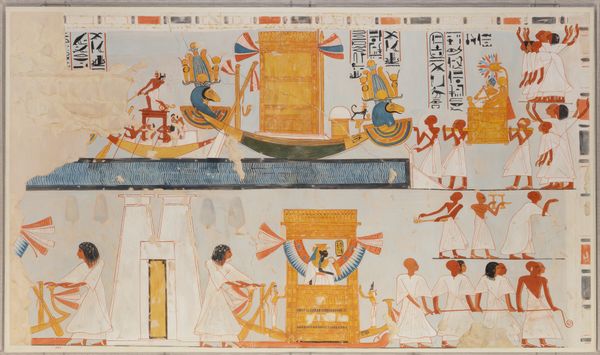
Facsimile of the painting on the inner back side of the sarcophagus of Aashyt 2051 BC
0:00
0:00
painting
#
animal
#
painting
#
landscape
#
ancient-egyptian-art
#
figuration
#
egypt
#
history-painting
Dimensions: facsimile: h. 33.9 cm (13 3/8 in); w. 108.6 cm (42 3/4 in) Scale 1:2 framed: h. 38.4 cm (15 1/8 in); w. 113.3 cm (44 5/8 in)
Copyright: Public Domain
Curator: Let’s turn our attention to this captivating scene, a facsimile of a painting originally found on the inner back side of the sarcophagus of Aashyt, dating back to 2051 BC. Editor: My immediate impression is one of striking domesticity amidst ritual. There's such an arresting simplicity to the line work. Curator: Precisely! The formal properties emphasize a world meticulously organized. Note the regimented rows of hieroglyphs and the clearly defined registers dividing the pictorial space. This speaks to a deeply structured cosmology. Editor: And the labor it represents! From the preparation of food and drink to the tending of animals. The painting almost serves as a detailed inventory of daily life within a wealthy household, translated onto the spiritual plane. What pigments did they use, I wonder, and where did those come from? Curator: Those are intriguing questions. Considering the context, we must interpret each object and figure within the schema of funerary art. These aren’t simply mundane activities but symbolic offerings ensuring Aashyt’s continued prosperity in the afterlife. The artist uses clear delineations to elevate these images beyond simple depictions, suggesting enduring concepts. Editor: Perhaps, but I find it powerful how immediate the work feels, regardless of intended symbolism. There is something immensely potent in the tangible relationship presented between the workers and those being served and the relationship to resources. These aren’t detached icons, but intimate scenes of service. Curator: A point well taken. The horizontal format draws the eye, encouraging a prolonged meditation on interconnectedness within the depicted environment. It shows us that ancient Egyptian painting was invested in establishing specific relationships. Editor: To linger on a work that depicts these themes of daily lives and of labor adds depth to how we view its impact within this gallery setting. The painting becomes not only a window into Aashyt’s world, but also into the world of those who labored to create it. Curator: Indeed, our exchange demonstrates how art, viewed through different analytical frameworks, enhances its capacity to illuminate the past. Editor: I agree. Seeing it this way makes the artwork far more vital and thought provoking.
Comments
No comments
Be the first to comment and join the conversation on the ultimate creative platform.


